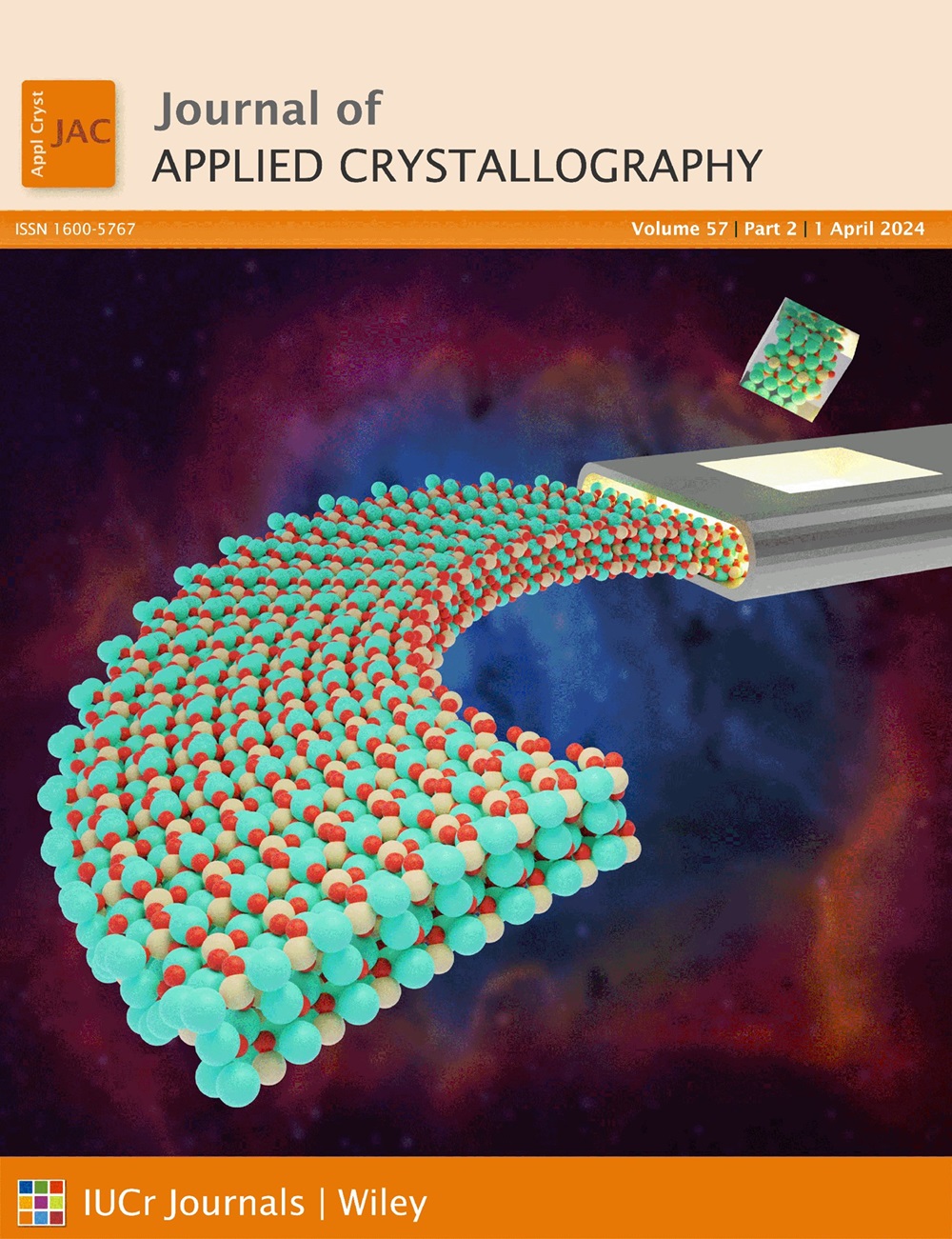用于中子衍射的新型高效二维位置敏感型 ZnS:Ag/6LiF 闪烁探测器
IF 5.2
3区 材料科学
Q2 CHEMISTRY, MULTIDISCIPLINARY
引用次数: 0
摘要
ISIS 开发基于闪烁体的 ZnS:Ag/6LiF 中子探测器已有三十多年的历史。持续的研究和开发旨在提高探测器的能力,实现更好的性能,满足中子仪器日益严苛的要求。作为该计划的一部分,为中子衍射应用开发了带有波长转换光纤的高效二维位置敏感闪烁探测器。该探测器由双闪烁体-纤维层组成,以提高探测效率。每层由两个正交的纤维平面组成,置于两个 ZnS:Ag/6LiF 闪烁器屏幕之间。每层的前后闪烁体上都附有薄薄的反射箔片,以尽量减少层间的光串扰。探测器的有效面积为 192 × 192 毫米,正方形像素尺寸为 3 × 3 毫米。在双层探测器的开发过程中,还制造了一个单层探测器,以及一个可以分别读出两层探测器的探测器原型。本文讨论了这三种探测器的效率计算和测量结果。新型双层探测器已安装在 ISIS 的 SXD 衍射仪上并进行了测试。通过研究参考晶体样品,将探测器的性能与目前在 SXD 上使用的闪烁体探测器进行了比较。双层波长偏移纤维探测器的效率提高了 3 倍多。针对二维探测器实施并测试了进一步优化空间分辨率和响应均匀性的软件程序。本手稿讨论了这些方法和结果。本文章由计算机程序翻译,如有差异,请以英文原文为准。
Novel high-efficiency 2D position-sensitive ZnS:Ag/6LiF scintillator detector for neutron diffraction
Scintillator-based ZnS:Ag/6LiF neutron detectors have been under development at ISIS for more than three decades. Continuous research and development aim to improve detector capabilities, achieve better performance and meet the increasingly demanding requirements set by neutron instruments. As part of this program, a high-efficiency 2D position-sensitive scintillator detector with wavelength-shifting fibres has been developed for neutron-diffraction applications. The detector consists of a double scintillator-fibre layer to improve detection efficiency. Each layer is made up of two orthogonal fibre planes placed between two ZnS:Ag/6LiF scintillator screens. Thin reflective foils are attached to the front and back scintillators of each layer to minimize light cross-talk between layers. The detector has an active area of 192 × 192 mm with a square pixel size of 3 × 3 mm. As part of the development process of the double-layer detector, a single-layer detector was built, together with a prototype detector in which the two layers of the detector could be read out separately. Efficiency calculations and measurements of all three detectors are discussed. The novel double-layer detector has been installed and tested on the SXD diffractometer at ISIS. The detector performance is compared with the current scintillator detectors employed on SXD by studying reference crystal samples. More than a factor of 3 improvement in efficiency is achieved with the double-layer wavelength-shifting-fibre detector. Software routines for further optimizations in spatial resolution and uniformity of response have been implemented and tested for 2D detectors. The methods and results are discussed in this manuscript.
求助全文
通过发布文献求助,成功后即可免费获取论文全文。
去求助
来源期刊

Journal of Applied Crystallography
CHEMISTRY, MULTIDISCIPLINARYCRYSTALLOGRAPH-CRYSTALLOGRAPHY
CiteScore
7.80
自引率
3.30%
发文量
178
期刊介绍:
Many research topics in condensed matter research, materials science and the life sciences make use of crystallographic methods to study crystalline and non-crystalline matter with neutrons, X-rays and electrons. Articles published in the Journal of Applied Crystallography focus on these methods and their use in identifying structural and diffusion-controlled phase transformations, structure-property relationships, structural changes of defects, interfaces and surfaces, etc. Developments of instrumentation and crystallographic apparatus, theory and interpretation, numerical analysis and other related subjects are also covered. The journal is the primary place where crystallographic computer program information is published.
 求助内容:
求助内容: 应助结果提醒方式:
应助结果提醒方式:


